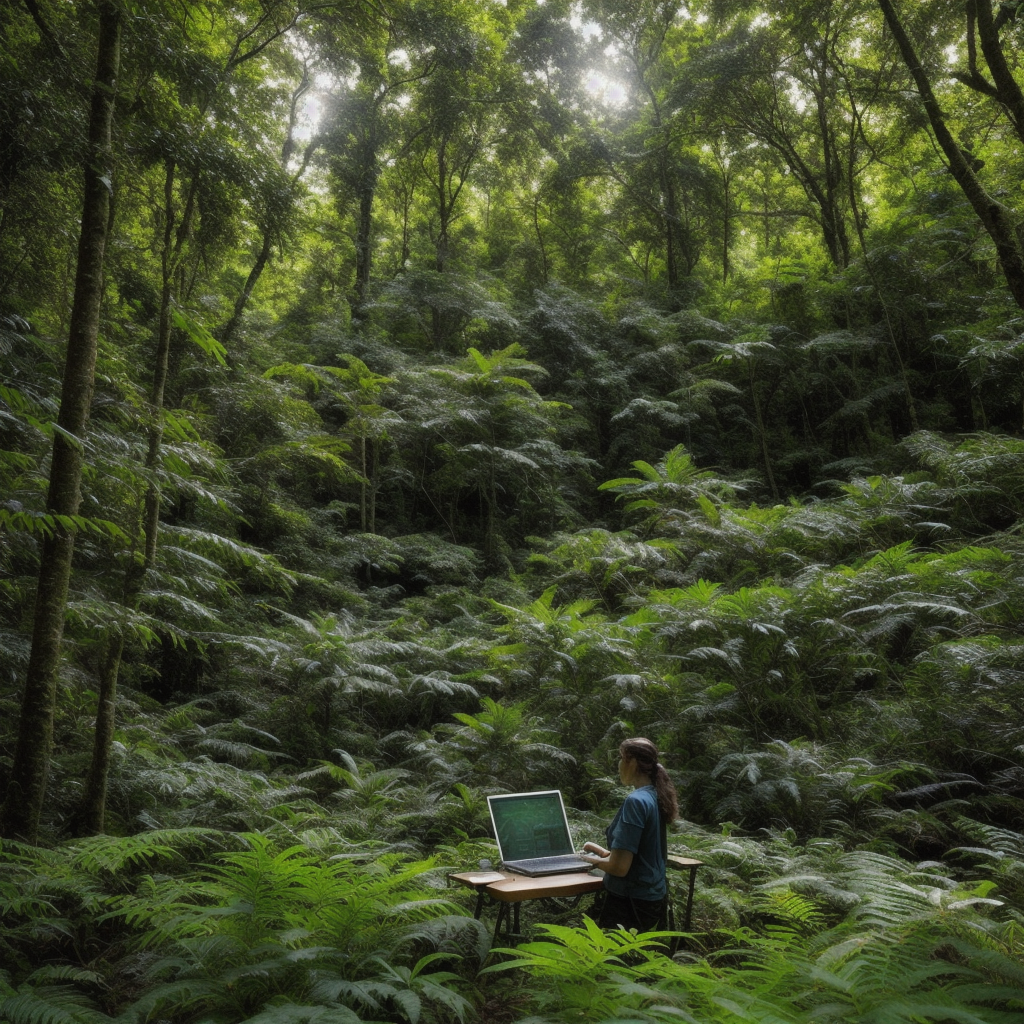
## Key Points:
**h2**
1. Scientists are leveraging the blend of microphones and AI to identify species through their unique sounds.
2. The method is known as bioacoustics research.
3. This technology could be instrumental in protecting ecosystems as the planet warms.
4. This eco-friendly method serves as a non-intrusive way of gauging the biodiversity of a location.
5. The AI technology is trained to recognize and categorize various chirps and croaks of different species.
6. The process can be conducted over a long period to understand species behavior patterns and their impact on the ecosystem.
# The Science of Bioacoustics Research: The Chirp Heard Round the World
**h1**
Imagine strutting down the Amazon forest, headset plugged-in, desperately trying to identify various bird species by their chirps or frog species by their croaks. Rather than struggling and possibly getting lost in the process, wouldn’t it be cool if we could deploy tech to do the heavy lifting for us? Well, that’s exactly what scientists have been up to lately.
**h2**
Scientists are putting AI and microphones to work, developing a technology that can identify species through their unique sounds, a process known as bioacoustics research. Consider it Shazam, but for the animal kingdom. Rather cool, isn’t it?
**h3**
This ground-breaking technology has a multitude of applications. However, its pivotal role could be in protecting our fragile ecosystems as the planet continues to warm. Through the non-intrusive method of bioacoustics research, these relentless soldiers of mother nature aim to gauge biodiversity in a location without disturbing its inhabitants.
**h4**
So, how does it all work?
**h5**
Well, welcome to the crash-course of AI and birdsong patterns.
**h6**
In layman terms, scientists train AI technologies to recognize and categorize the sounds emitted by different creatures. A bird’s song at dawn or a frog’s croak when it rains would be as unique to the AI as the voice of Morgan Freeman is to us. Over time, this process can generate insights into the behavioural patterns of species and the impacts of these patterns on the wider ecosystems.
While the more technophobic among us may paint this as a prelude to a robot uprising, let’s be real – it’s just too cool for school. Furthermore, it highlights the potential fusion of technology and nature that is not only possible, but could stand to revolutionize our understanding and protection of natural ecosystems worldwide.
***Hot Take:***
**h2**
On a personal note, isn’t it fascinating how we’re using technology to understand and preserve the world around us? It’s like we’ve finally begun to make up for all those years we spent sticking fingers in our ears and going “la, la, la” while nature tried to warn us about the disastrous impact of our actions.
As a tech enthusiast and nature lover, strolling down the woods mimicking bird calls used to be my charm. Today, the joy has doubled knowing I may have a tech accomplice to validate my mimicry and possibly grade my performance?
Besides easing the job for researchers and making nature strolls more fun, it’s uplifting to see how this technology could lead to more accurate and efficient monitoring of ecosystems, giving us critical information in the face of increasing climate change. More awareness means better preservation efforts, and that’s something we can all get behind.
Bioacoustics represents an exciting prospect where AI meets nature; a man-made creation working to understand and conserve the natural world. That, my friends, is what I call the “Circle of Tech.” Yes, I just redefined the Lion King’s, iconic phrase—it’s the circle of tech, and it moves us all (to a healthier, safer planet)!